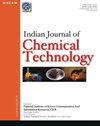新型punnai甲酯对CuO纳米添加剂在TBC发动机中的作用
IF 0.5
4区 工程技术
Q4 CHEMISTRY, APPLIED
引用次数: 0
摘要
本文章由计算机程序翻译,如有差异,请以英文原文为准。
Effect of CuO nano additive with novel punnai methyl ester in a TBC CI engine
The requirement for petroleum fuel has amplified due to the growth of automobile industries and population growth. To meet fossil fuel demand in the future, alternative fuel for diesel fuel is necessary. The technique for engine modification is also considered as the latest advance in engine research aimed to complete combustion. The engine has been coated with a mixture of a ceramic thermal barrier material of 88% Yttria Stabilized Zirconia (YSZ), 4% Magnesium oxide (MgO), and 8% Titanium oxide (TiO 2 ) of 150 μ m thickness by the plasma spray process. After engine modification, the coated engine has been analyzed with the mixing of Copper oxide (CuO) nanoadditive to the B20 Punnai Methyl Ester. The structural and chemical constituents of the biofuel are determined using Fourier transform infrared spectroscopy and gas chromatography. The test result noted that brake thermal efficiency is increased by 17.14% for the coated engine as compared to the uncoated engine. The brake specific fuel consumption for the tested fuel used in the coated engine is decreased by 11.16%. Engine emission parameters are reduced especially oxides of nitrogen (NO x ) emission of 10.84% for the tested fuel in the coated engine.
求助全文
通过发布文献求助,成功后即可免费获取论文全文。
去求助
来源期刊

Indian Journal of Chemical Technology
工程技术-工程:化工
CiteScore
0.90
自引率
20.00%
发文量
17
审稿时长
6-12 weeks
期刊介绍:
Indian Journal of Chemical Technology has established itself as the leading journal in the exciting field of chemical engineering and technology. It is intended for rapid communication of knowledge and experience to engineers and scientists working in the area of research development or practical application of chemical technology. This bimonthly journal includes novel and original research findings as well as reviews in the areas related to – Chemical Engineering, Catalysis, Leather Processing, Polymerization, Membrane Separation, Pharmaceuticals and Drugs, Agrochemicals, Reaction Engineering, Biochemical Engineering, Petroleum Technology, Corrosion & Metallurgy and Applied Chemistry.
 求助内容:
求助内容: 应助结果提醒方式:
应助结果提醒方式:


